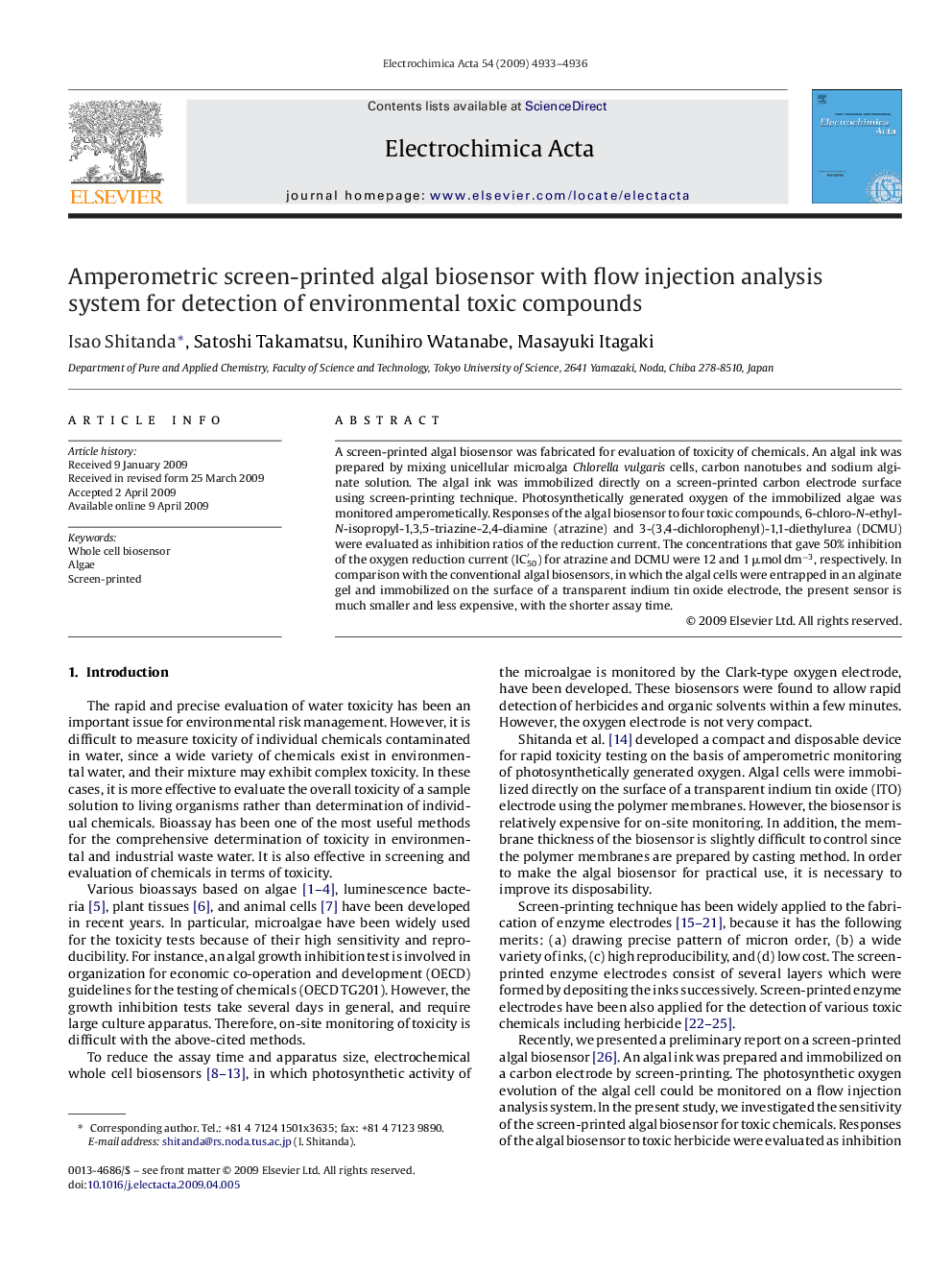| Article ID | Journal | Published Year | Pages | File Type |
|---|---|---|---|---|
| 192468 | Electrochimica Acta | 2009 | 4 Pages |
A screen-printed algal biosensor was fabricated for evaluation of toxicity of chemicals. An algal ink was prepared by mixing unicellular microalga Chlorella vulgaris cells, carbon nanotubes and sodium alginate solution. The algal ink was immobilized directly on a screen-printed carbon electrode surface using screen-printing technique. Photosynthetically generated oxygen of the immobilized algae was monitored amperometically. Responses of the algal biosensor to four toxic compounds, 6-chloro-N-ethyl-N -isopropyl-1,3,5-triazine-2,4-diamine (atrazine) and 3-(3,4-dichlorophenyl)-1,1-diethylurea (DCMU) were evaluated as inhibition ratios of the reduction current. The concentrations that gave 50% inhibition of the oxygen reduction current (IC′50)(IC′50) for atrazine and DCMU were 12 and 1 μmol dm−3, respectively. In comparison with the conventional algal biosensors, in which the algal cells were entrapped in an alginate gel and immobilized on the surface of a transparent indium tin oxide electrode, the present sensor is much smaller and less expensive, with the shorter assay time.
